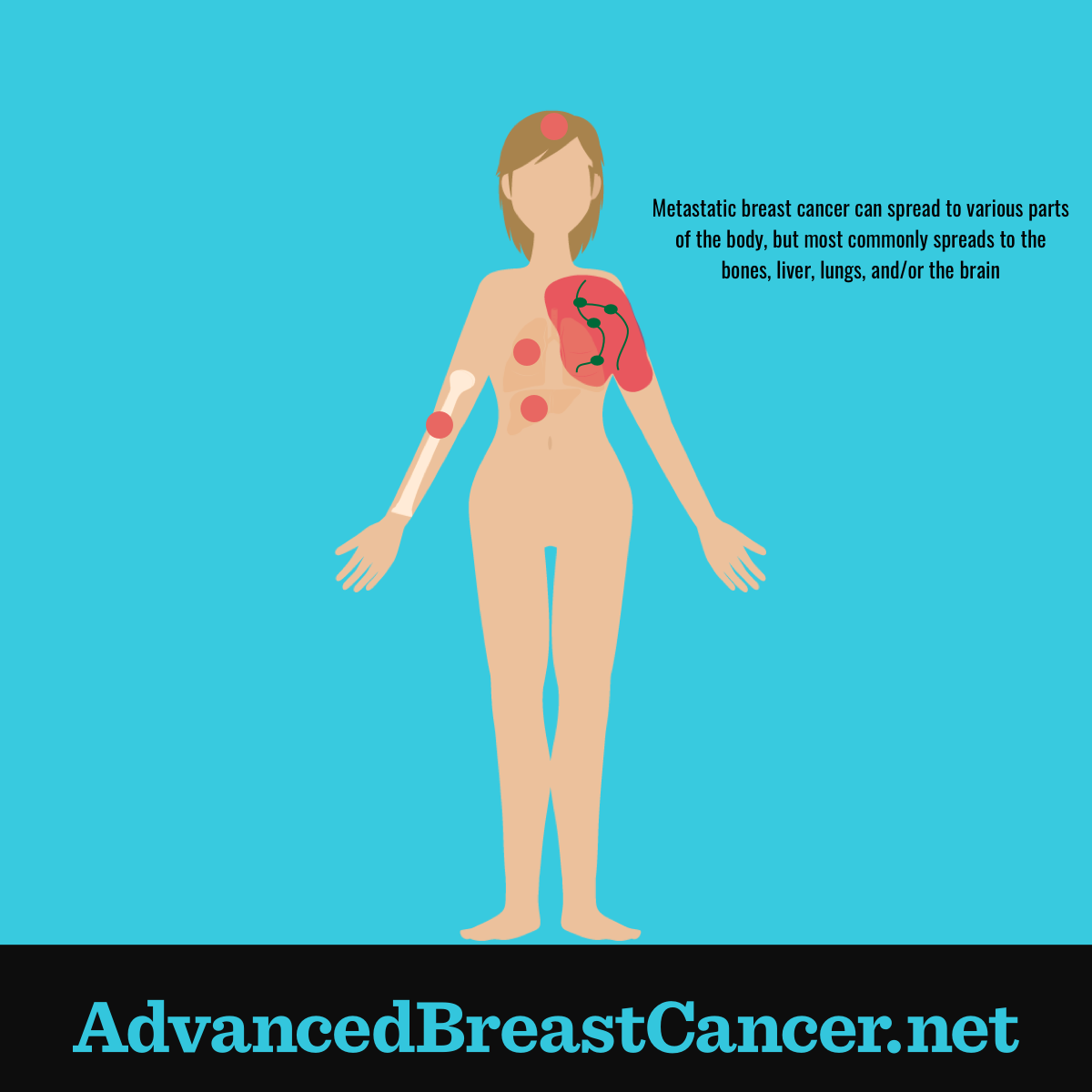Where Does Breast Cancer Spread?
Reviewed by: HU Medical Review Board | Last Reviewed: September 2022 | Last updated: September 2022
Breast cancer can spread from the breast to different parts of your body. When this happens, it is called metastatic breast cancer. Regardless of which part of the body breast cancer spreads to, it is still called breast cancer. Metastatic cancer is always named according to where it started.1
What is metastatic breast cancer?
Breast cancer spreads when cancerous cells break off from the original tumor and move to other organs or bones through the bloodstream or lymph system. It is also possible for breast cancer to spread to nearby lymph nodes. This is called locally advanced breast cancer.2
To diagnose metastatic breast cancer, your doctor will first ask about your medical history. Then they will carry out various tests, which may include imaging scans and collecting tissue for analysis (biopsy).2
While metastatic breast cancer can affect any part of the body, it is most likely to affect the:2
- Liver
- Lungs
- Bones
- Brain
Figure. Common locations of breast cancer metastasis
Liver metastasis
Breast cancer, like most cancers, can spread to the liver. When this happens, it is called liver metastasis or “liver mets.” Around half of people diagnosed with metastatic breast cancer have liver metastasis.3
Symptoms of liver metastasis may include:4
- Nausea
- Loss of appetite
- Sweating and fever
- Weight loss
- Yellowing of the skin and the white part of the eye (jaundice)
However, liver metastasis may not cause any noticeable symptoms. Doctors diagnose liver metastasis by performing tests such as:4
- Ultrasound scan
- Computed tomography (CT) scan
- Liver biopsy
- Liver function tests
- PET scan
- Magnetic resonance imaging (MRI) test
Lung metastasis
Breast cancer also can spread to the lungs, resulting in lung metastasis. Symptoms of lung metastasis may include:5
- Pain in your chest
- Weakness
- Cough, especially coughing up blood
- Weight loss
- Trouble breathing
To diagnose lung metastasis, your doctor will perform tests including:5
- Chest X-ray
- Bronchoscopy, a test to view your airways
- Lung needle biopsy
- Surgical biopsy
Bone metastasis
Bone metastasis occurs when cancerous cells move from a breast to one or more bones. Most types of cancer can spread to the bones, but breast and prostate cancer are the most common ones to extend to this area.6
Bone metastasis can affect any bone in the human body. But it typically affects the thigh, pelvis, and spine.6
Symptoms of bone metastasis may include:6
- Trouble controlling bowel movements and bladder
- Pain in your bones
- Weakness in your limbs
- Nausea, vomiting, confusion, and constipation as a result of high calcium blood levels
Bone metastasis may feel similar to pain from arthritis or exercise. Listen to your body. If the pain does not go away or gets worse, even after you rest, talk to your doctor.7
Brain metastasis
Brain metastasis happens when breast cancer cells break away from the original site (breast) and move to the brain. Various forms of cancer can spread to the brain, but the most likely cancers to do so are:8
- Breast cancer
- Kidney cancer
- Lung cancer
- Colon cancer
- Melanoma (a type of skin cancer)
With brain metastasis, you may have symptoms such as:8
- Seizures
- Memory loss
- Headaches, which can trigger nausea or vomiting
- Body weakness or numbness
Cancer spreads to the brain in about 10 to 15 percent of people with metastatic breast cancer.9
